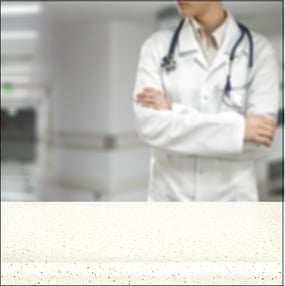Microbes have been known to exist in the environment since the beginning of time. Some microbes are as old as Earth itself. They are an inherent element of life. Microbes are found everywhere, deep inside the Earth’s crust, in the polar caps and in all bodies of water. They are also found in plants, animals, humans, and they reside in your clothes and hair. Microbes have played a part in shaping the different habitats across the globe, and have even helped mold the evolution of many life forms.
Not all microbes are harmless. Some of them carry diseases, many of which can be deadly; these are called pathogens. Disease causing pathogens include viruses, bacteria and fungi. Some commonly known viruses are Influenza, Measles and Herpes. Pneumonia, Meningitis, Dysentery and Cholera are examples of some commonly known bacteria. Fungal infections include Tinea, Candidiasis and Histoplasmosis.
All of these pathogens are unwanted microbes that have plagued us for centuries. Many of these disease causing pathogens can be controlled, and in many cases, eradicated through vaccination and proper healthcare. In hospitals, Clinics and Doctor’s offices, there are other dangerously harmful viruses and bacteria that are cause for concern. Some of these are: Methicillin-resistant Staphylococcus aureus (MSRA), Pseudomonas Aeruginosa, Clostridium Difficile, A-Baumannii, Hepatitis B (HBV), Hepatitis C (HCV), Swine Flu (H1N1), Human Immunodeficiency Virus (HIV-1), Herpes Simplex Virus 1 and 2 (HSV-1, HSV-2) and Vancomycin-Resistant Enterococci (VRE).
How do these pathogens get transmitted in medical environments?
Besides the obvious airborne and bodily fluid contact, there is also concern for microbial surface contamination. Although it is still a topic of debate, there are studies with compelling evidence showing that pathogens can be transmitted from surfaces to healthcare personnel and patients through their hands. These findings highlight the crucial importance of cleaning and disinfecting hospital surfaces and medical equipment. More effort and care should be taken to improve the cleaning procedures carried out in healthcare facilities and their equipment.1

Patients with poor skin integrity, newborns and patients with infected open wounds are particularly sensitive to pathogens. Contaminated inanimate surfaces, especially those that are frequently touched by hands, like door-knobs, handrails and counters, can contribute to the spreading of pathogens.2 Transmission can take place when a healthcare worker’s bare hands or gloves touch a contaminated surface after touching a patient, or when a patient touches a contaminated surface. The risk of becoming infected increases if the patient then touches his/her eyes or mouth.3 The contamination problem can be even worse, because there are some pathogens that are able to survive for weeks and even months on environmental surfaces; like MRSA, VRE and C Difficile spores. In addition, healthcare personnel have frequent contact with surfaces in patient rooms, increasing the opportunity for contamination through touch.4
What can be done to solve this problem?
Unfortunately, relying on visual inspection of potentially infected areas is not enough. Visual inspection should not be the sole criterion to determine cleanliness, since humans are incapable of seeing microbes with the naked eye. Also, there is a subjectivity factor in this inspection process. An apparently clean area can hide substrates, spores and pathogens on its surface. Healthcare facilities’ surfaces should be assessed by following strict cleaning procedures. Studies recommend that cleaning should be performed more than once a day, in order to prevent microbial surface contamination on delicate patients.5
Hand hygiene remains the single most important measure that should be taken to prevent cross-contamination. The Centers for Disease Control and Prevention (CDC) and the World Health Organization (WHO) have published evidence-based guidelines for proper hand hygiene.6 However, despite these well-known efforts, evidence seems to suggest that adherence to these hand-hygiene protocols is low. Hospitals should closely monitor these practices to prevent transmission. Additionally, even though there are cleaning standards outlined by the Association of Perioperative Registered Nurses and the Centers for Disease and Control and Prevention, some of their goals are not universal and their descriptions appear to be vague.7
In conclusion, more profound and specific research is still needed to determine and establish all of the possible sources for cross-contamination in healthcare facilities. Following enforced strict cleaning procedures, to provide the most sterile environment for patients, remains to be the key in reducing the number of stubborn pathogens that remain active on surfaces for prolonged periods of time.
If you would like to learn more about Sklar's Cleaning & Disinfecting products, please click the button below.
References
1,6 Meehan Arias, Kathleen MS, CIC (2010). Contamination and Cross Contamination on Hospital Surfaces and Medical Equipment.
2 Kramer A, Scwebke I, Kampt G. (2006). How long do nosocomial pathogens persist on inanimate surfaces?
3,5 Adriano Menis et al. (2015, Vol 23). Avaliação da desinfecção de superfícies hospitalares por diferentes métodos de monitoramento. Rev. Latino-Am. Enfermagem.
4 Weber, David J. (2013). The Role of the Surface Environment in Healthcare-Associated Infections.
7 Balkissoon, Rishi MD. (2014). Microbial Surface Contamination After Standard Operating Room Cleaning Practices Following Surgical Treatment of Infection.



